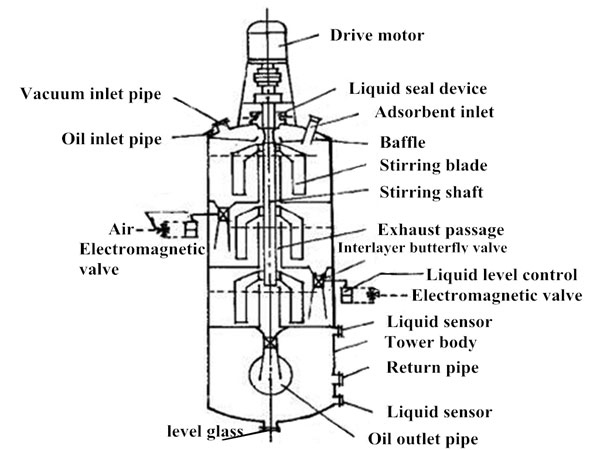Decolorization of vegetable oil is a step in the refining process of vegetable oil. Decolorization of vegetable oil is a necessary process for the production of high-quality edible oil. In the process of vegetable oil decolorization, pigments, peroxides, trace metals, residual soaps and phospholipids in the oil can be removed, and the color reversion of the finished oil can be prevented, and the shelf life can be accelerated. The vegetable oil decolorization method commonly used in edible oil processing plants is to mix a decolorizing agent with the function of adsorbing pigments into the pretreated semi-finished oil. After the contact reaction takes time, the decolorizing agent is separated by filtration. The decolorizing agent used is usually activated clay or activated carbon.

In addition to physical and chemical adsorption methods, vegetable oil decolorization methods include chemical methods, such as oxidation, reduction, acid refining, photochemical and heating methods. The chemical reagent decolorization method in the vegetable oil decolorization method not only affects the quality of the oil, but also the reagent may remain in the oil, which affects the safety and sanitation of the edible oil. The vegetable oil decolorization process includes intermittent decolorization process and continuous decolorization process.

Vegetable oil decolorization process:
1. Intermittent decolorization process
In the intermittent decolorization process, the mixing, heating, action and cooling of the oil and the adsorbent are carried out in batches in the decolorizing pot, and the adsorbent is also separated by filtering in batches. The intermittent decolorization process is suitable for the decolorization of small-tonnage vegetable oil. The intermittent decolorization process is simple in operation, low in investment, and does not need to use a continuous airtight filter, but the labor intensity is high and the production cycle is long.
2. Continuous decolorization process
In the decolorization process of the continuous decolorization process, the quantitative supply of adsorbent, the mixed adsorption of oil and adsorbent, and the separation of oil and decolorizer are all performed in the process of continuous operation. Vegetable oil decolorization and filtration are carried out in the same closed vacuum system, and the two filters are used interchangeably to make the process continuous.
The continuous decolorization process can maintain the required oil-white clay contact time, so a better decolorization effect can be obtained, the amount of adsorbent can be reduced, and the oil entering and exiting the decolorization tower can be heat exchanged to save energy.
Copyright © Henan Zhongxing Grain And Oil Machinery Co.,Ltd. All Rights Reserved. Powered by MetInfo